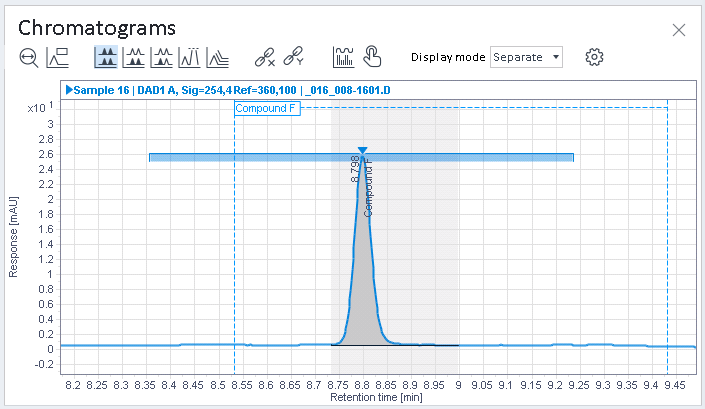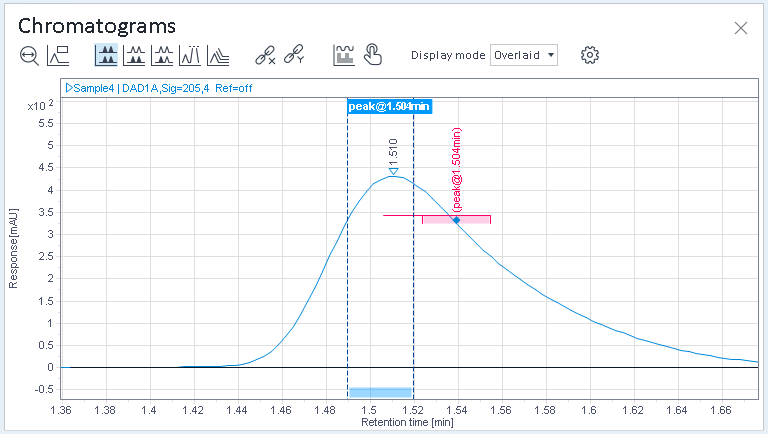Use time reference compounds
Preparations
|
-
Under Methods in the navigation pane, select the processing method you want to edit.
-
In the Processing Method window, select the Compounds > Identification node.
-
Select the General tab.
-
Select Use time reference compounds.
The columns Is time ref., Associated time ref., and Factor become visible in the compound table.
-
Select the Compound Table tab.
-
For the compounds that you want to use as time reference compounds, select the Is time ref. check box.
-
For the other compounds or timed groups, select the associated time reference compound from the drop-down.
-
Check the Factor column, and adjust it as required.
The default factor is 1, that means the time shift is applied in the same way as for the time reference compound. A factor greater or smaller than 1 amplifies or diminishes the correction per compound.
-
Check the RT Update column, and adjust it as required.
With this parameter, you define the point in time when the system updates the expected RT in the method.
-
In the Chromatograms window, click
 in the
toolbar.
in the
toolbar. -
On the Compound Windows page, select the following check boxes:
Show effective timed group windows
Show compound identification windows
-
On the Expected compounds page, select the following check boxes:
Show expected compounds
Show timed groups
After reprocessing your data, two dashed lines to the left and right indicate the expected (uncorrected) retention time window. Bars above each peak show the corrected retention time window that was actually used to find a peak.


See Also
Description of all Compound Identification Parameters
Concept of Time Reference Compounds
base-id: 11015935243
id: 11015935243